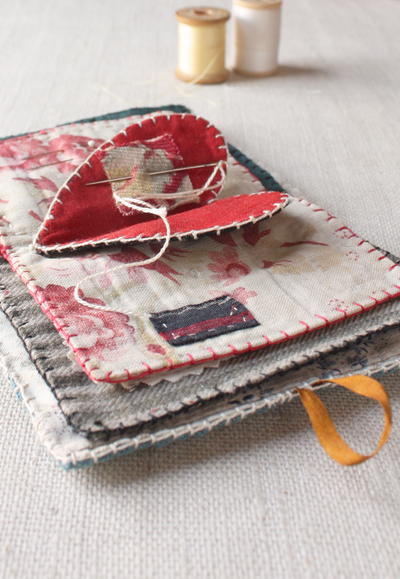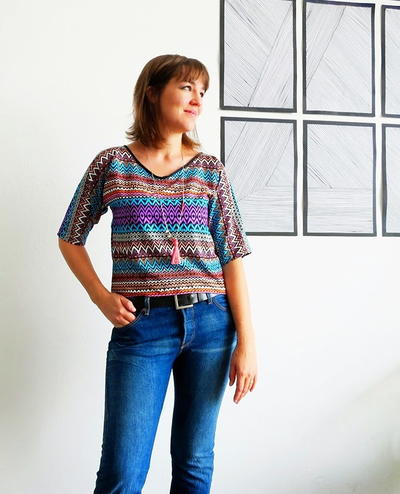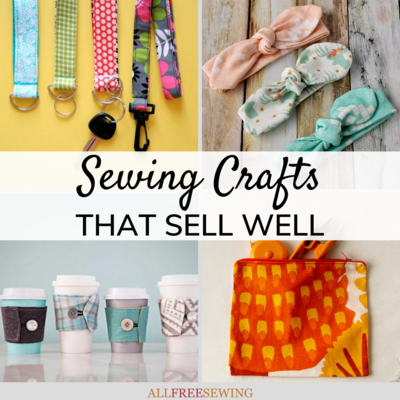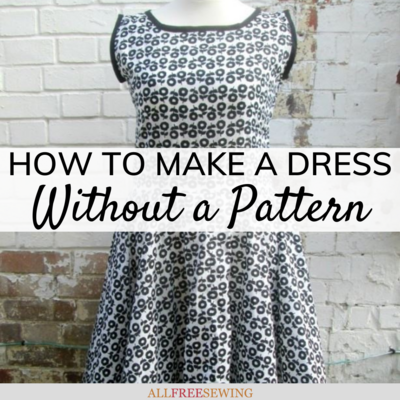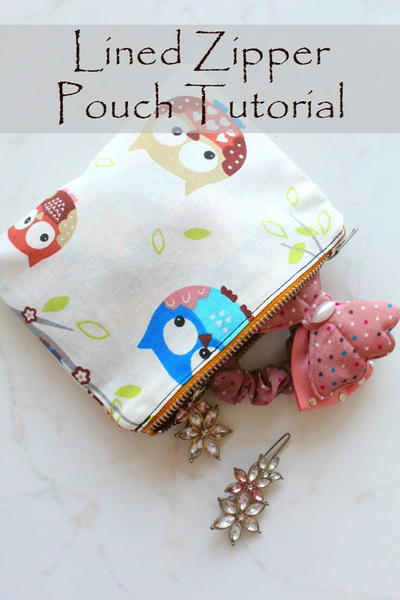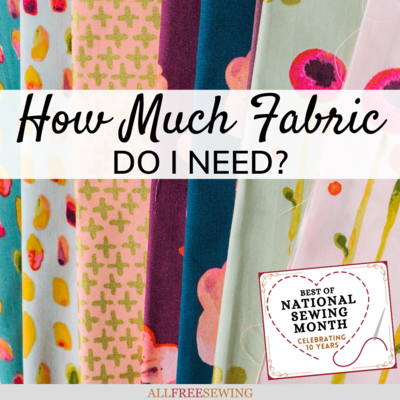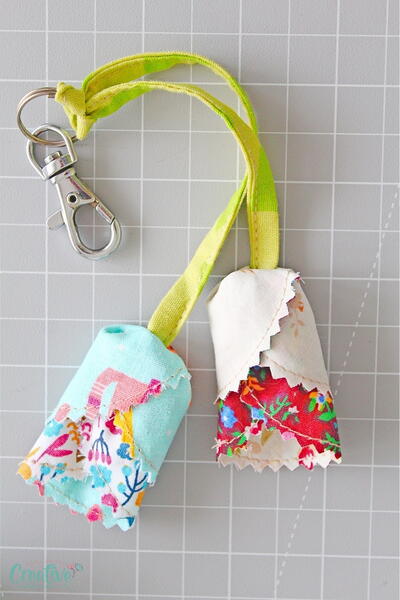14+ Unconventional Sewing Tools
Try these cool sewing tools and hacks to save some dough on tools and surprise you on your future sewing projects.
If you're new to sewing, it can be easy to get overwhelmed with the number of tools you need: needles, thread, scissors, pinking shears, seam ripper, seam gauge, iron, ham, bobbin, pins, measuring tape, pattern weights, tracing wheel, and of course, the sewing machine.
All these essentials can easily add up, and pretty soon you'll have no money left to buy fabric!
With these 14+ Unconventional Sewing Tools—most of which you already have in your house—you'll be able to make the same gorgeous sewing projects with less effort and less money spent.
To save some money (and some frustration), we've compiled a list of simple sewing hacks to make your life easier.
From rubber bands to dental floss to hairspray and more - you won't believe what everyday items you can use to make stunning dresses, skirts, and bags without breaking the bank.
So, open your office drawers, your kitchen cabinets, and your husband's toolbox and get sewing with these easy and cool tool hacks.
Sign Up For More Free Patterns >>>
14 Unconventional Sewing Tools
Did you know you have things lying around your house that can make your sewing life much easier? Save money by trying these sewing hacks instead of wasting your money on fancy products.
- Pipe cleaners: Bend one pipe cleaner into an oval, attach it to a straight one, and BAM! You've got a handy pipe cleaner brush. You can remove dust from under and around your sewing machine using this simple tool that costs only pennies to make.
- Washi tape: Keep your fingers safe by using washi tape to keep your hemlines or small appliques in place instead of pins. Bonus: It looks pretty!
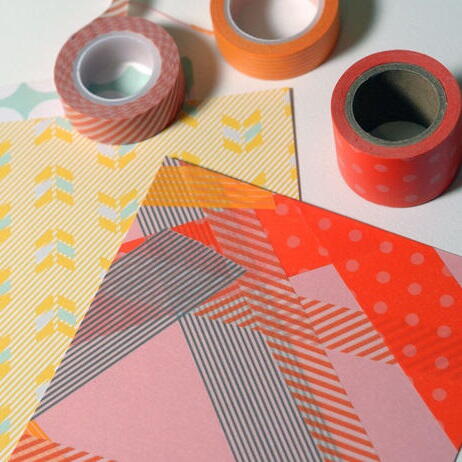
- Two pencils: Not all sewing patterns include a seam allowance, but you can easily add one with this technique. Rubber band two pencils together and press down on both while you're tracing the pattern. Tada! You've drawn the seam allowance.
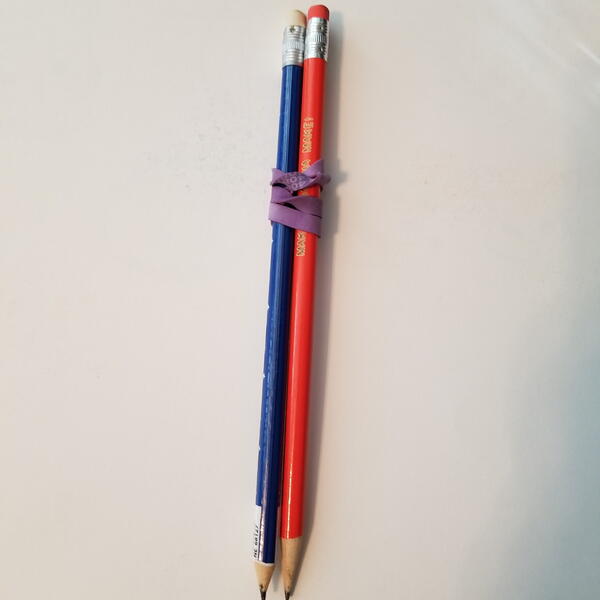
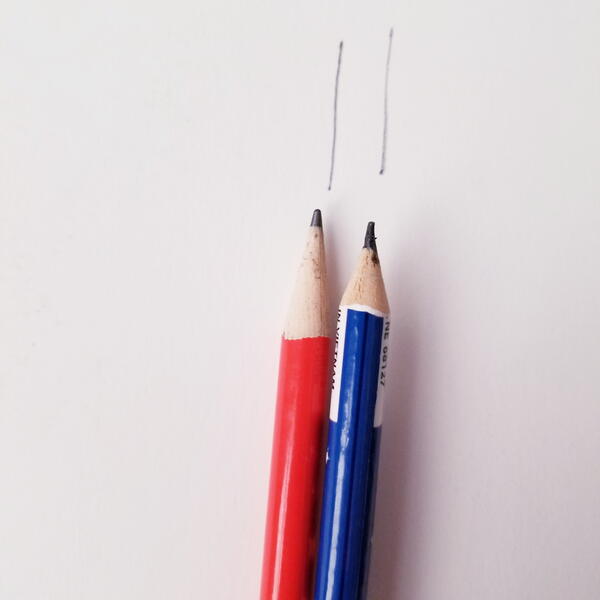
- Dental floss: Make the perfect gathers in your skirt or dress pattern by keeping dental floss handy in the craft room.
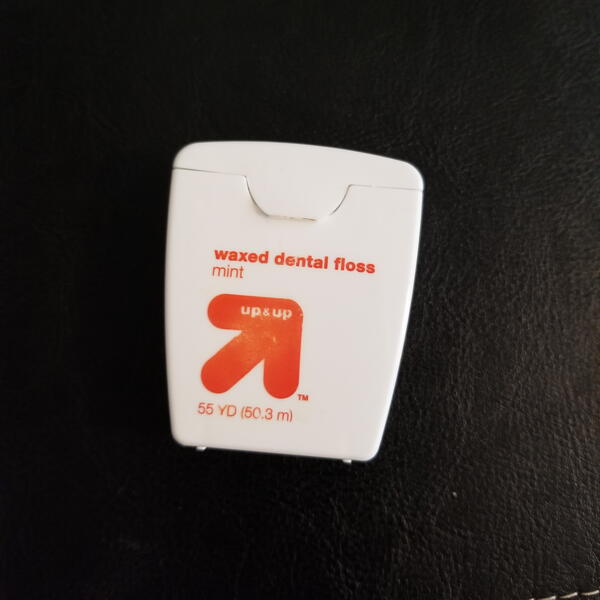

- Booklight: Attach a cheap book light to the back of your sewing machine using painters tape to provide more light while you're sewing. Booklights are also bendable, so you can shine extra light on a specific area of your project.
- Washers: You probably have some of these lying around from your last home improvement project. Stack a few washers on top of each other, secure them with yarn, and you have simple fabric weights.
- Suction cup soap holder: Keep your scissors, seam ripper, pencil, glasses, and more in one place by attaching this cheap holder to the side of your sewing machine.
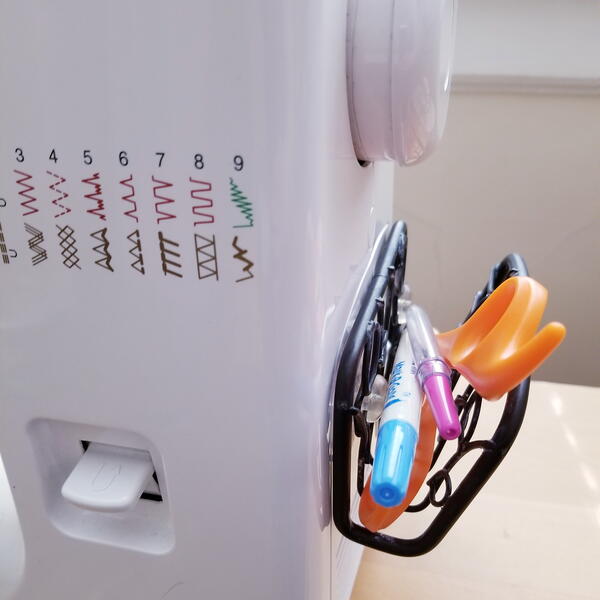
- Extra-long tweezers: Tweezers can help you thread your machine, help remove loose threads in tight spaces, as well as pull tiny threads after you use your seam ripper.
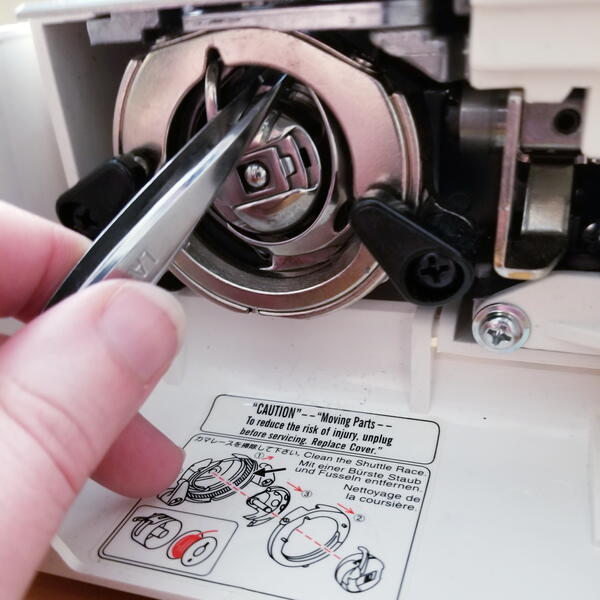
- Binder clips: When cutting slippery fabrics, use small binder clips to hold the edges together. This method will prevent the fabric from sliding around while you're cutting, plus it won't leave holes in your delicate fabrics as pins do.
Note: Not recommended for expensive or irreplaceable fabric as it can still damage very delicate pieces. Test first or clip at a spot that won't be visible.

- Rubber band: Wrap a thick rubber band around the free arm of your sewing machine and use it to line up your fabric to create a straight seam allowance.
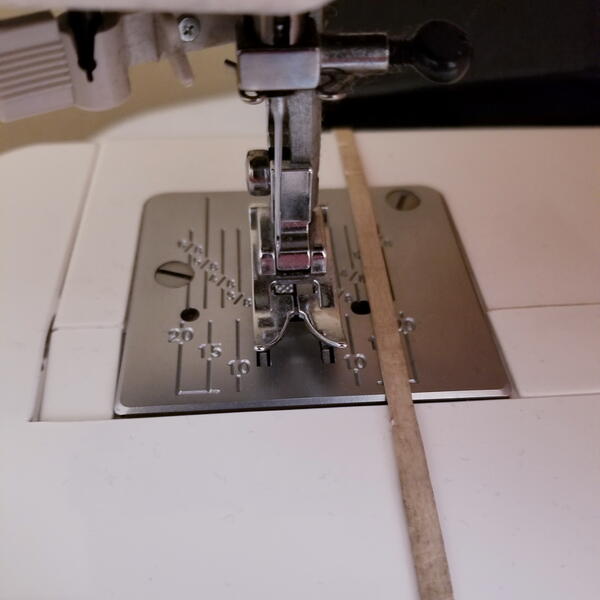
- Little wooden stick: Use a 6-inch stick with an angled edge as a makeshift iron to press down your seams between stitching sessions. Surprisingly, it works as well as a regular iron!
- Hairspray: Spray the end of your thread with hairspray to make threading a needle easier.
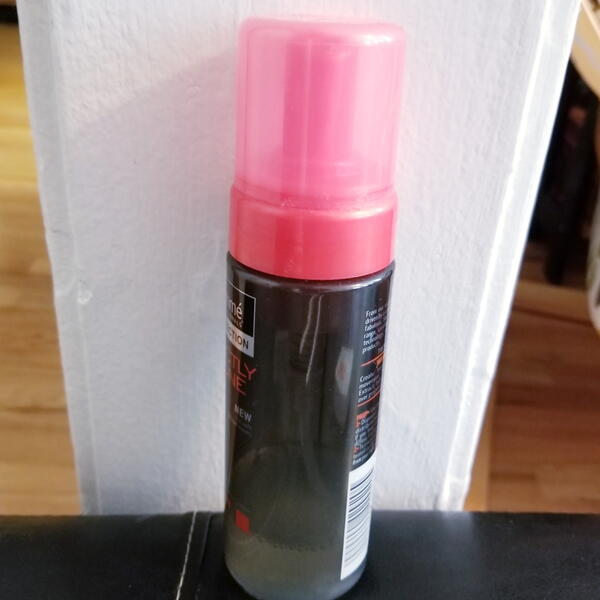
- Rubber jar opener: If the foot pedal of your sewing machine tends to get away from you, you can make it stay put with a jar opener. Use one made from textured rubber and place it under your foot pedal to keep it from sliding around.
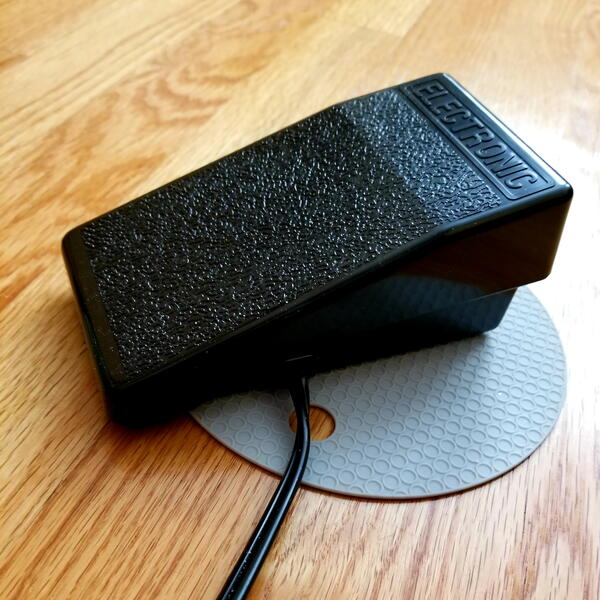
- Chopsticks: You can use a wooden chopstick with a pointed end for many things when sewing, including guiding fabric under the pressure foot of your machine or gently poking out corners.
Note: It's best to use polished chopsticks for this, not the cheap kind you get from restaurants.
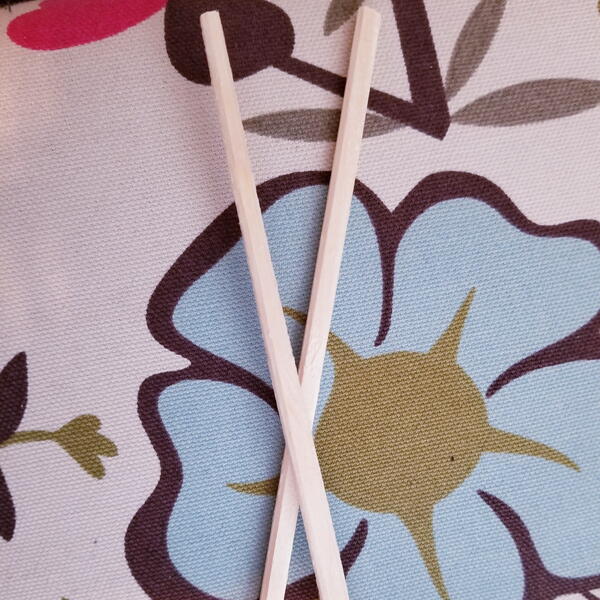
Additional Unusual Sewing Tools
When it comes to cool sewing tools you might not expect, there are even more already in your home. Keep these in mind in case you need them the next time you're working on a new sewing project.
- Calculator for quick math needs
- Cotton swabs for lint removal
- Dryer sheets for cleaning an iron
- Hair straightener and dryer for ironing without an iron
- Letter opener for straight lines, pressing, and turning out fabric
- Magnets to hold pins and needles
- Magnifying glass for details
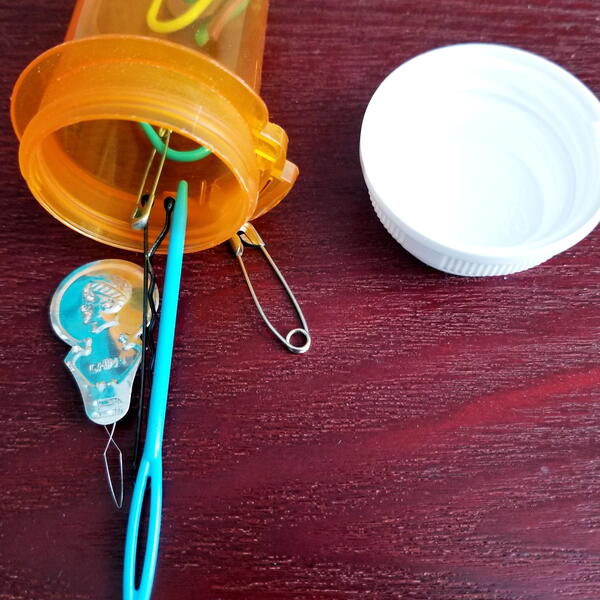
- Mallet for grommets and other unique projects
- Nuts and bolts for adding weight
- Old (clean) jars and cans for holding supplies, circle tracing, and pressing
- Pieces of soap for marking fabric
- Pill bottle for holding smaller notions
- Tea towels for pressing
- Toe separators for bobbins
- Wooden spoon for turning our sewn fabric
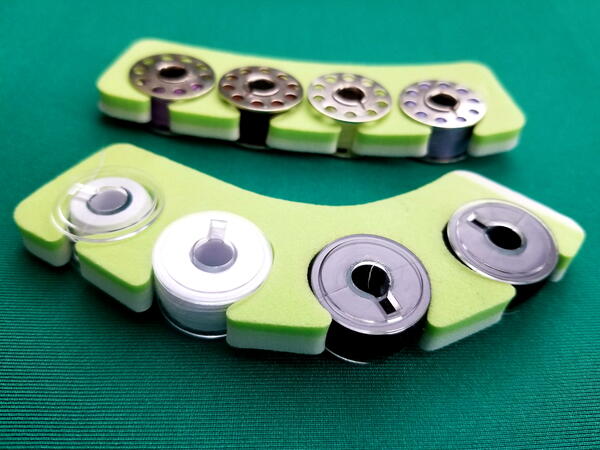
PLUS! Unconventional Sewing Tools PDF
For your convenience, we even have a downloable PDF of the most common household items that can be used as unexpected sewing tools when needed.
Click the button below, download the full and high-res version. Then you can keep it on your computer or print it and keep by your desk for when you need it!
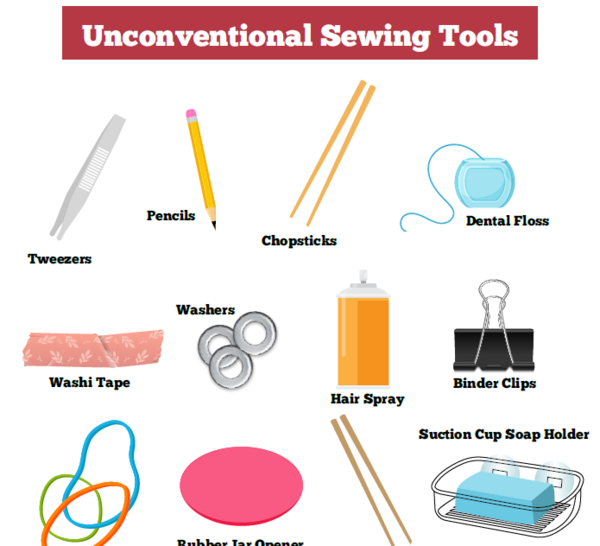
Want More?
15 Tools for the No-Sew Crafter >>>
What other unconventional items have you used when sewing?
Read Next50+ Sewing Crafts That Sell Well
Your Recently Viewed Projects
Lynn K
Nov 21, 2018
Such an informative post! Who would have thought that any of these things would be useful when sewing. 2 pencils tied together to trace the seam allowance - ingenious! Hairspray for threading - so clever! Every one of the above tips would be helpful to any anyone who ever sews. Thank you very much!
Weberme
Sep 30, 2018
Wow some great tips I never heard of like the stacking washers for weights or the booklight attached to the machine or the hairspray for threading the needle. I also use some tape for a guide for keeping my sewing straight.
Sigo
Aug 30, 2018
I love reading useful tips and tricks like these. When I sew, I do something similar like number 10 except I use a piece of masking tape on the free arm of my sewing machine to create a straight line to follow whilst sewing. The tape is sticky enough to stay in place yet can be easily removed when I do not need it anymore.
KLC
Dec 01, 2017
So cool! I like the idea of using what I already have in my home when sewing.
Polly Esther
Jun 13, 2016
OMG! I'm passing this on to my mom. She's just getting back into sewing and this can save her so much money! #BestIdeaEver
AFC Editor Annalis a
Jun 03, 2016
I would have never thought some of these things could be used as sewing tools! This is so handy for every sewist to know.
Report Inappropriate Comment
Are you sure you would like to report this comment? It will be flagged for our moderators to take action.
Thank you for taking the time to improve the content on our site.

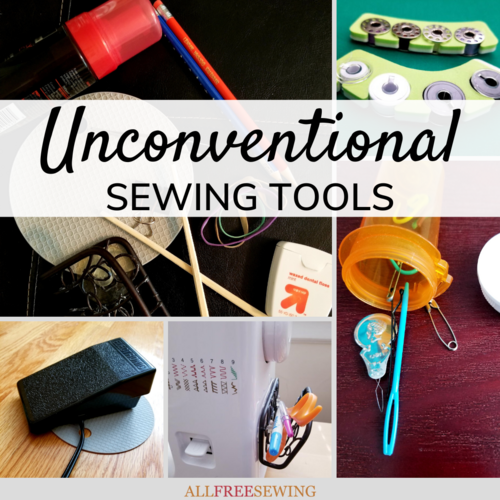
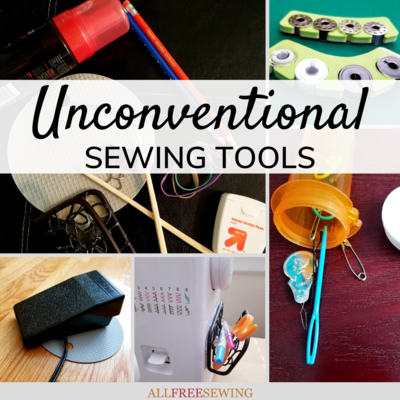
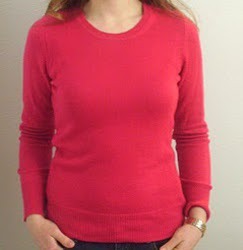
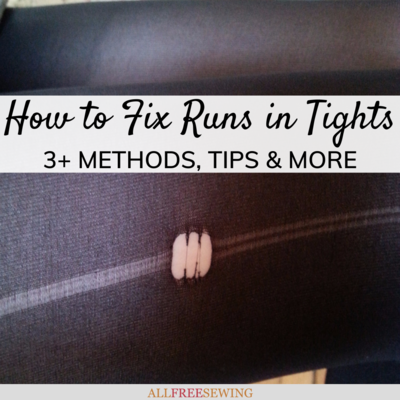
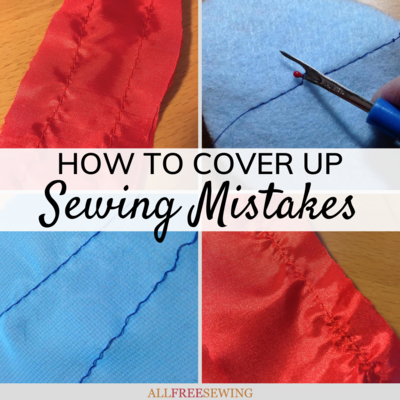
![Know Your Skirts Guide [Infographic]](http://irepo.primecp.com/2021/10/509029/Know-Your-Skirts-Infographic-square21-nw_Large400_ID-4536247.png?v=4536247)
